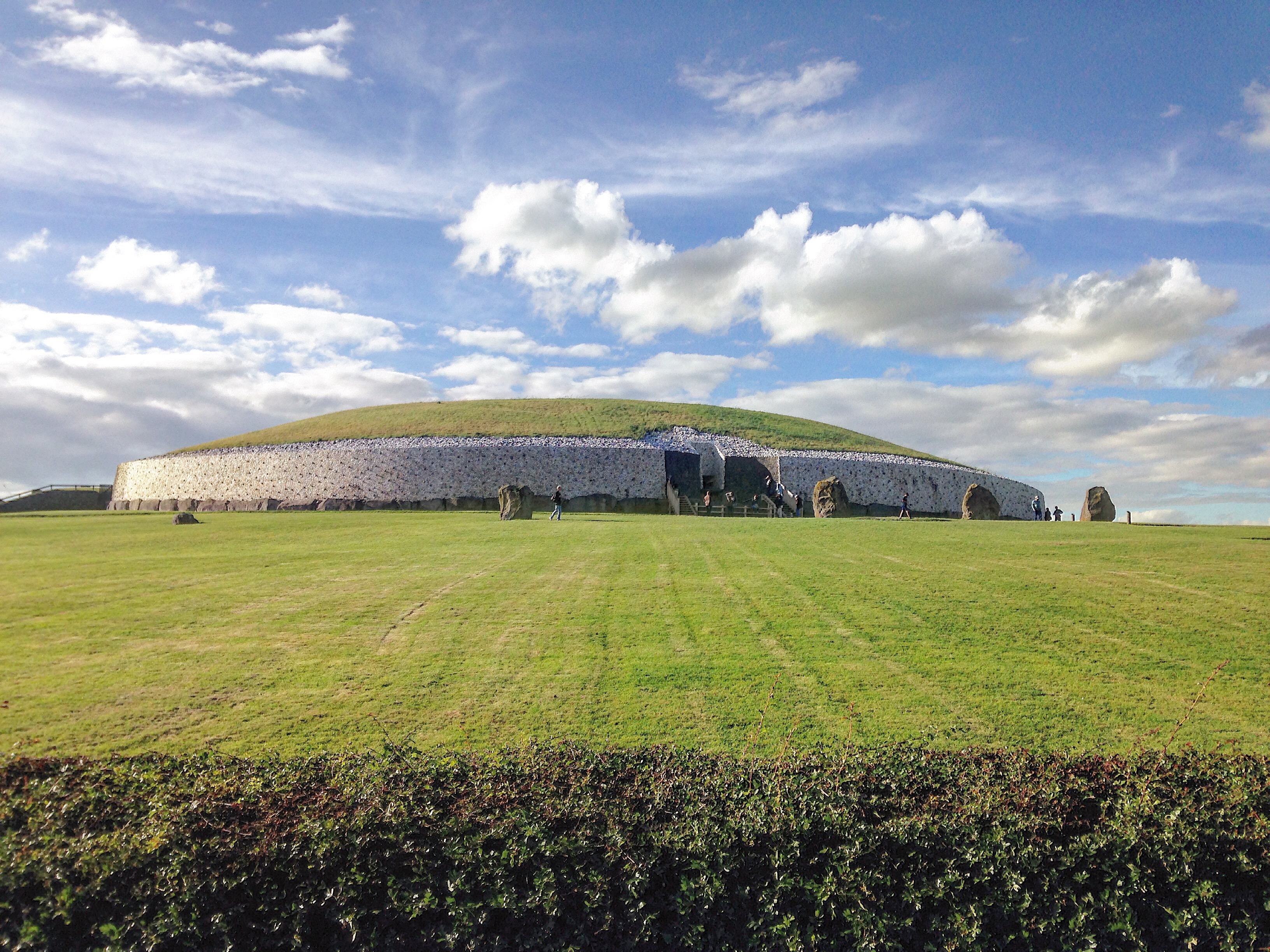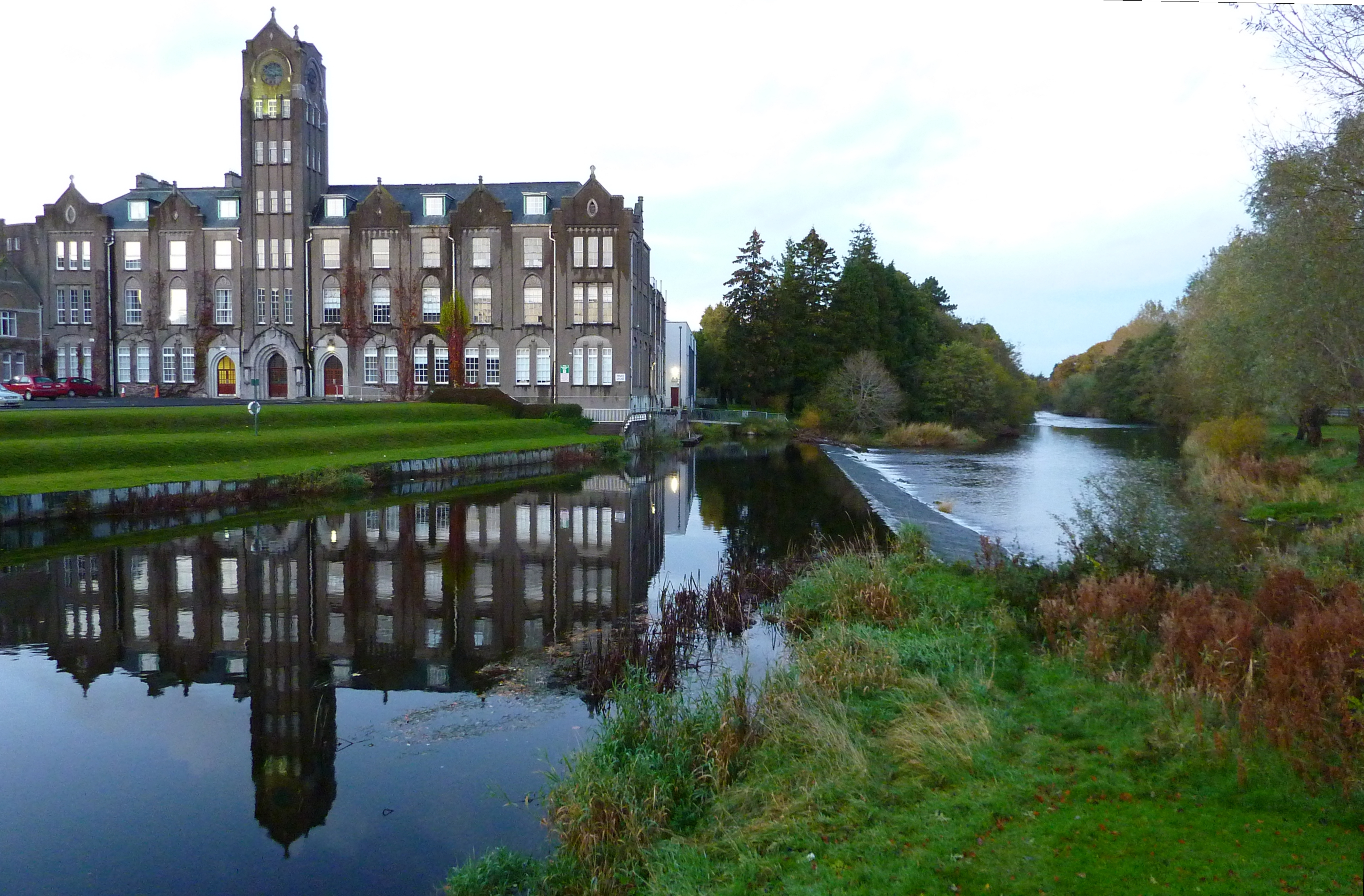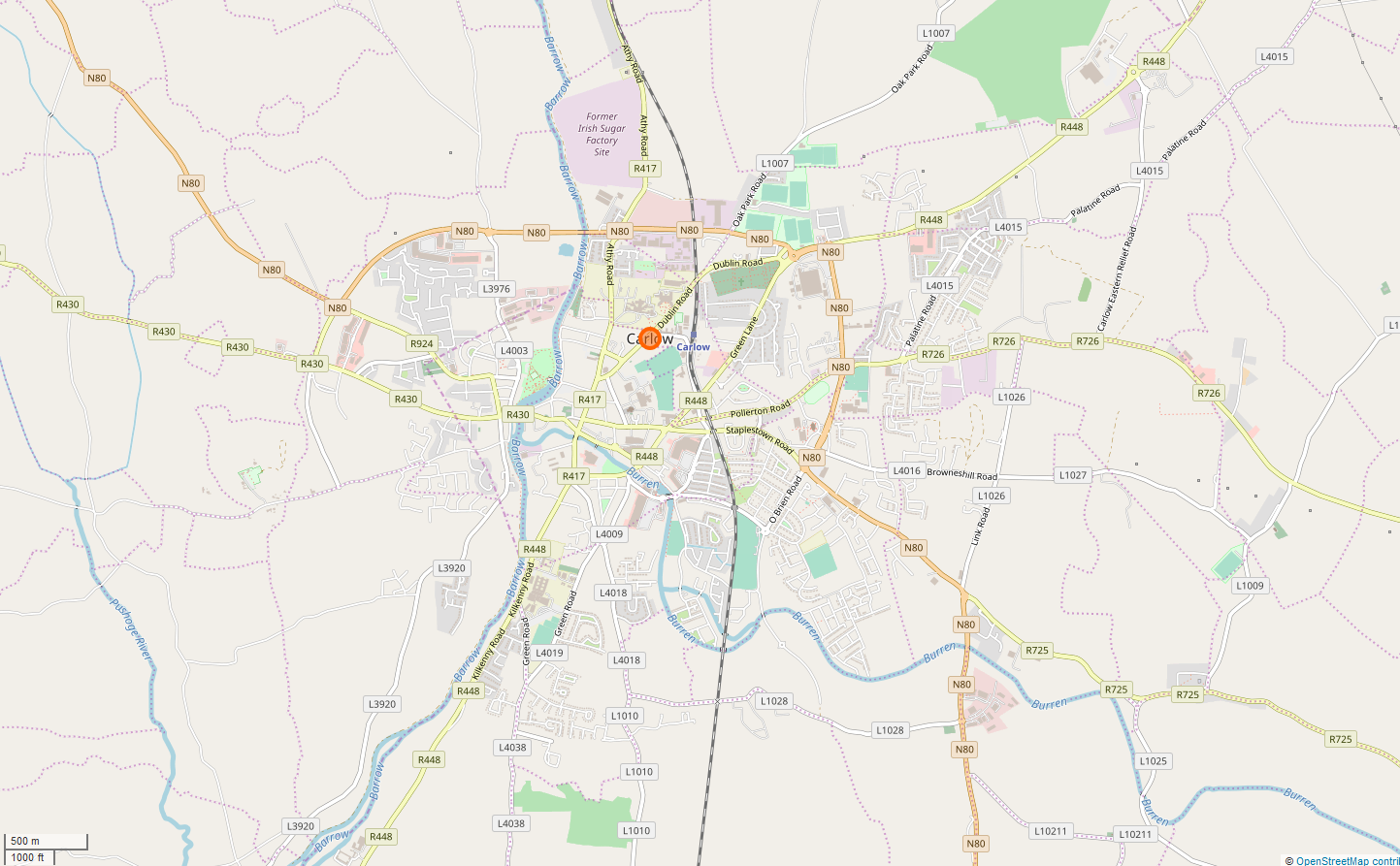|
Knockmaree Dolmen
Knockmaree Dolmen, or Knockmaree Cist, is a prehistoric site of the Neolithic period, in Phoenix Park just north of Chapelizod, near Dublin, Ireland. Other forms of the name are ''Knockmary'' or ''Knockmaroon Dolmen'', or ''Cnoc-Maraidhe''. Description The tomb, situated on a small ridge, is a cist, a type of burial chamber found in Ireland on the south and east coast. It dates from about 3000 B.C. to 2500 B.C. A capstone, measuring by , is supported by smaller stones. The capstone is water-worn, and is thought to have come from the River Liffey nearby."Dublin north city Linkardstown burial" ''Megalithic Monuments of Ireland''. Retrieved 20 March 2020. [...More Info...] [...Related Items...] OR: [Wikipedia] [Google] [Baidu] |
Phoenix Park
The Phoenix Park () is a large urban park in Dublin, Ireland, lying west of the city centre, north of the River Liffey. Its perimeter wall encloses of recreational space. It includes large areas of grassland and tree-lined avenues, and since the 17th century has been home to a herd of wild fallow deer. The Irish Government is lobbying UNESCO to have the park designated as a World Heritage Site. History The park's name is derived from the Irish ''fhionnuisce'', meaning clear or still water. After the Norman invasion of Ireland, Normans conquered Dublin and its hinterland in the 12th century, Hugh Tyrrel, 1st Baron of Castleknock (barony), Castleknock, granted a large area of land, including what now comprises the Phoenix Park, to the Knights Hospitaller. They established an abbey at Kilmainham on the site now occupied by Royal Hospital Kilmainham. The knights lost their lands in 1537 following the Dissolution of the Monasteries under Henry VIII of England. Eighty years later ... [...More Info...] [...Related Items...] OR: [Wikipedia] [Google] [Baidu] |
Dublin
Dublin is the capital and largest city of Republic of Ireland, Ireland. Situated on Dublin Bay at the mouth of the River Liffey, it is in the Provinces of Ireland, province of Leinster, and is bordered on the south by the Dublin Mountains, part of the Wicklow Mountains range. Dublin is the largest city by population on the island of Ireland; at the 2022 census of Ireland, 2022 census, the city council area had a population of 592,713, while the city including suburbs had a population of 1,263,219, County Dublin had a population of 1,501,500. Various definitions of a metropolitan Greater Dublin Area exist. A settlement was established in the area by the Gaels during or before the 7th century, followed by the Vikings. As the Kingdom of Dublin grew, it became Ireland's principal settlement by the 12th century Anglo-Norman invasion of Ireland. The city expanded rapidly from the 17th century and was briefly the second largest in the British Empire and sixth largest in Western Europ ... [...More Info...] [...Related Items...] OR: [Wikipedia] [Google] [Baidu] |
Neolithic Ireland
The prehistory of Ireland has been pieced together from archaeological evidence, which has grown at an increasing rate over recent decades. It begins with the first evidence of permanent human residence in Ireland around 10,500 BC (although there is evidence of human presence as early as 31,000 BC) and finishes with the start of the historical record around 400 AD. Both the beginning and end dates of the period are later than for much of Europe and all of the Near East. The prehistoric period covers the Palaeolithic, Mesolithic, Neolithic, Bronze Age and Iron Age societies of Ireland. For much of Europe, the historical record begins when the Romans invaded; as Ireland was not invaded by the Romans its historical record starts later, with the coming of Christianity. The two periods that have left the most spectacular groups of remains are the Neolithic, with its megalithic tombs, and the Bronze Age, which left among other things, gold jewellery from a time when Ireland was a ... [...More Info...] [...Related Items...] OR: [Wikipedia] [Google] [Baidu] |
Chapelizod
Chapelizod () is a suburban village of Dublin, Ireland. It lies in the wooded valley of the River Liffey, near the Strawberry Beds and the Phoenix Park. The village is associated with Iseult of Ireland and the location of Iseult's chapel. Chapelizod is under the administration of Dublin City Council. Location The civil parish of Chapelizod is part of the barony of Castleknock. The parish consists of a single townland of the same name. However, 465 acres are within the walls of the Phoenix Park while the village proper, outside the walls, contains only 67 acres. It is the only parish of the barony that lies outside the territory of the modern county of Fingal. Chapelizod forms part of the local electoral area of Ballyfermot–Drimnagh within the Dublin City Council administrative area. History The origins of Chapelizod are obscure. There is evidence of Neolithic settlement between the southern ridge of the Phoenix Park and the Liffey and several burial mounds exist to the ... [...More Info...] [...Related Items...] OR: [Wikipedia] [Google] [Baidu] |
Cist
In archeology, a cist (; also kist ; ultimately from ; cognate to ) or cist grave is a small stone-built coffin-like box or ossuary used to hold the bodies of the dead. In some ways, it is similar to the deeper shaft tomb. Examples occur across Europe and in the Middle East. A cist may have formerly been associated with other monuments, perhaps under a cairn or a long barrow. Several cists are sometimes found close together within the same cairn or barrow. Often ornaments have been found within an excavated cist, indicating the wealth or prominence of the interred individual. This old word is preserved in the Nordic languages as in Swedish and in Danish and Norwegian, where it is the word for a funerary coffin. In English the term is related to ''cistern'' and to ''chest''. Regional examples ;England * Teffont Evias, England ;Estonia * Jõelähtme (Rebala) stone-cist graves, Harju County ;Guatemala * Mundo Perdido, Tikal, Petén Department ;Ireland * Knockm ... [...More Info...] [...Related Items...] OR: [Wikipedia] [Google] [Baidu] |
River Liffey
The River Liffey (Irish language, Irish: ''An Life'', historically ''An Ruirthe(a)ch'') is a river in eastern Ireland that ultimately flows through the centre of Dublin to its mouth within Dublin Bay. Its major Tributary, tributaries include the River Dodder, the River Poddle and the River Camac. The river supplies much of Dublin's water and supports a range of recreational activities. Name While Ptolemy's ''Geography (Ptolemy), Geography'' (2nd century AD) describes a river which he labels Οβοκα (''Oboka''), this is not the Liffey: ultimately it leads to the name of the River Avoca in County Wicklow. According to "Place Names from our Older Literature - IV." by Boswell, C. S. (1904 Connradh na Gaedhilge) the river takes its name from Magh Life, i.e. the plain of Kildare through which the Life flows. This in turn takes its name from Life, daughter of Canann Curthach, who eloped with and married Deltbanna mac Druchta, cup-bearer to Conaire Mór High King of Ireland. Life ... [...More Info...] [...Related Items...] OR: [Wikipedia] [Google] [Baidu] |
Tumulus
A tumulus (: tumuli) is a mound of Soil, earth and Rock (geology), stones raised over a grave or graves. Tumuli are also known as barrows, burial mounds, mounds, howes, or in Siberia and Central Asia as ''kurgans'', and may be found throughout much of the world. A cairn, which is a mound of stones built for various purposes, may also originally have been a tumulus. Tumuli are often categorised according to their external apparent shape. In this respect, a long barrow is a long tumulus, usually constructed on top of several burials, such as passage graves. A round barrow is a round tumulus, also commonly constructed on top of burials. The internal structure and architecture of both long and round barrows have a broad range; the categorization only refers to the external apparent shape. The method of may involve a dolmen, a cist, a mortuary enclosure, a mortuary house, or a chamber tomb. Examples of barrows include Duggleby Howe and Maeshowe. Etymology The word ''tumulus'' ... [...More Info...] [...Related Items...] OR: [Wikipedia] [Google] [Baidu] |
Royal Irish Academy
The Royal Irish Academy (RIA; ), based in Dublin, is an academic body that promotes study in the natural sciences, arts, literature, and social sciences. It is Ireland's premier List of Irish learned societies, learned society and one of its leading cultural institution, cultural and academic institutions. The academy was established in 1785 and granted a royal charter by King George III in 1786. the RIA has 600 members, with regular members being Irish residents elected in recognition of their academic achievements, and honorary members similarly qualified but usually based abroad; a small number of members are also elected in recognition of non-academic contributions to the Irish society. All members are entitled to use the honorific title MRIA with their names. Until the late 19th century the Royal Irish Academy was the owner of the main national collection of Irish antiquities. It presented its collection of archaeological artefacts and similar items, which included such ... [...More Info...] [...Related Items...] OR: [Wikipedia] [Google] [Baidu] |
George Petrie (antiquarian)
George Petrie (1 January 1790 – 17 January 1866) was an Irish painter, musician, antiquarian and archaeologist of the Victorian era who was instrumental in building the collections of the Royal Irish Academy and National Museum of Ireland. Personal life George Petrie was born in Dublin, Ireland, and grew up there, living at 21 Great Charles Street, just off Mountjoy Square. He was the son of the portrait and miniature painter James Petrie, a native of Aberdeen, Scotland, who had settled in Dublin. He was interested in art from an early age. He was sent to the Dublin Society's Schools, being educated as an artist, where he won the silver medal in 1805, aged 15. Career After an abortive trip to England in the company of friends Francis Danby and James Arthur O'Connor, he returned to Ireland where he worked mostly producing sketches for engravings for travel books – including among others, George Newenham Wright's guides to Killarney, Wicklow and Dublin, Thomas Cromwell' ... [...More Info...] [...Related Items...] OR: [Wikipedia] [Google] [Baidu] |
Littorina Obtusata
''Littorina'' is a genus of small sea snails, marine gastropod molluscs in the family Littorinidae, the winkles or periwinkles.WoRMS (2011). Littorina Férussac, 1822. Accessed through: World Register of Marine Species at http://www.marinespecies.org/aphia.php?p=taxdetails&id=138135 on 2011-04-15 These small snails live in the tidal zone of rocky shores. Overview In Europe there are about nine species in this genus, one of which is the rough periwinkle, ''Littorina saxatilis'' (Olivi, 1792). Another closely related (supposed) species ''Littorina tenebrosa'' (Montagu 1802) was thought to be distinct because of its different ecological requirements, but current studies have shown that it is not at all clear whether the two are indeed separate species or whether ''L. tenebrosa'' is perhaps merely an ecotype (an ecological form) of ''L. saxatilis''.Gosling, E.M. (2002). ''The periwinkle as a model in biodiversity studies: a geneticist's view.'' in Marine Biodiversity in Ireland a ... [...More Info...] [...Related Items...] OR: [Wikipedia] [Google] [Baidu] |
Carlow
Carlow ( ; ) is the county town of County Carlow, in the south-east of Republic of Ireland, Ireland, from Dublin. At the 2022 census of Ireland, 2022 census, it had a population of 27,351, the List of urban areas in the Republic of Ireland, twelfth-largest urban center in Ireland. The River Barrow flows through the town and forms the historic boundary between counties County Laois, Laois and Carlow. However, the Local Government (Ireland) Act 1898 included the town entirely in County Carlow. The settlement of Carlow is thousands of years old and pre-dates written Irish history. The town has played a major role in Irish history, serving as the capital of the country in the 14th century. The town is in a townland and Civil parishes in Ireland, civil parish of the same name. Etymology The name is an anglicisation of the Irish language, Irish ''Ceatharlach''. Historically, it was anglicised as ''Caherlagh'', ''Caterlagh'' and ''Catherlagh'', which are closer to the Irish spell ... [...More Info...] [...Related Items...] OR: [Wikipedia] [Google] [Baidu] |
Office Of Public Works
The Office of Public Works (OPW) (; legally the Commissioners of Public Works in Ireland) is a major Government of Ireland, Irish Government agency, which manages most of the Irish State's property portfolio, including hundreds of owned and rented Government offices and police properties, oversees National Monuments and directly manages some heritage properties, and is the lead State engineering agency, with a special focus on flood risk management. It lies within the remit of the Minister for Public Expenditure, National Development Plan Delivery and Reform, with functions largely delegated to a Minister of State at the Department of Public Expenditure, National Development Plan Delivery and Reform with special responsibility for the Office. The OPW has a central role in driving the Government's property asset management reform process, both in respect of its own portfolio and that of the wider public service. The agency was initially known as the Board of Works, a title inher ... [...More Info...] [...Related Items...] OR: [Wikipedia] [Google] [Baidu] |








